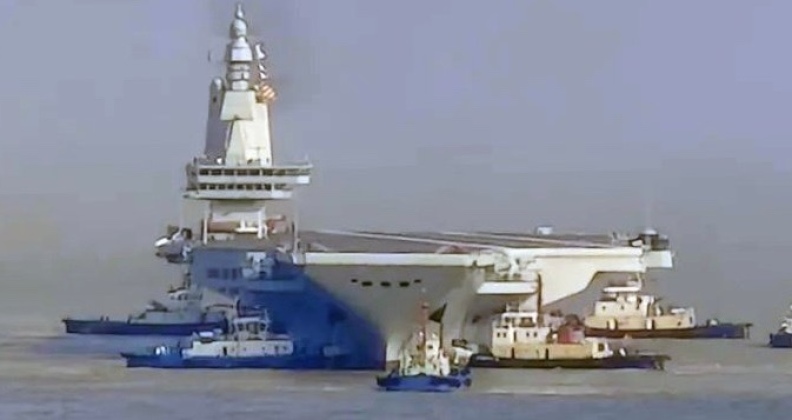The Chinese People’s Liberation Army Navy’s sixth carrier warship and first supercarrier the Fujian on May 1 began its first sea trials, almost two years after its launch on June 17, 2022. The warship left the Jiangnan Shipyard on Changxing Island, north of Shanghai, on April 30, shortly after five aircraft mockups had been sighted on its deck. This date marked exactly a week after the celebration of the 75th anniversary of the foundation of the People’s Liberation Army (PLA) Navy, and puts the ship on schedule to enter service before the end of 2026. The Fujian’s development represents a landmark both for China’s navy and for the balance of power at sea more broadly, and makes the country the first to field a large supercarrier of its kind other than the United States. The Soviet Union notably laid down a similarly sized supercarrier, the Ulyanovsk, in the late 1980s, although the uncompleted warship was scrapped after the state disintegrated in 1991. Technology transfers from the Soviet carrier program have played a key role in accelerating Chinese carrier development, with the country’s first two carriers capable of deployed fixed wing aircraft, the Liaoning and Shandong, both being closely derived from the Soviet Kuznetsov Class carrier design.

The Fujian’s design marks a major departure from preceding Chinese carriers, and is not only estimated to be close to one third larger at approximately 90,000 tons fully loaded, but also uses an electromagnetic catapult launch system where preceding ships used a ski jump launch system. Integration of an electromagnetic launch system was confirmed by Rear Admiral Yin Zhuo in 2017, and provides considerable advantages to carrier air wings including allowing aircraft to take off with far heavier weapons payloads and more fuel. These also take up much less space on the warships than less powerful steam catapult systems. The U.S. Navy carrier USS Gerald Ford is currently the only warship in the world with such a launch system, with the ship having begun its first operational deployment in October 2022 after close to ten years of delays. Compared to its predecessors, the Fujian will deploy a much larger complement of fighters, drones, electronic attack aircraft, and new KJ-600 ‘flying radar’ airborne early warning and control (AEW&C) systems, providing an air wing overwhelmingly superior to any fielded outside the U.S. Navy and potentially surpassing those of new American carriers.

The Fujian is slightly smaller than American Gerald Ford Class ships, and notably lacks a nuclear propulsion system which limits its ability to sustain high speed speed for prolonged periods or to operate at sea for very extended periods. Advantages, however, include deployment of J-15 fighters which are considerably longer ranged, more manoeuvrable and carry much larger radars than American F-18E/F Super Hornet fighters, as well as FC-31 stealth fighters which are also estimated to have the same range of advantages against American F-35Cs. The advanced features of the Fujian complement major advances made across the PLA Navy, particularly in the destroyer fleet, with Chinese Type 055 Class destroyers widely considered considered the most capable in the world. Its development has played a central role in stimulating the U.S. Navy to accelerate plans to develop its first 21st century destroyer class in an attempt to bridge the performance gap. Much like the Type 055, the first of which was launched in June 2017, albeit to a slightly lesser extent, the Fujian marks a major turning point highlighting China’s emerging primacy in a growing number of military areas.